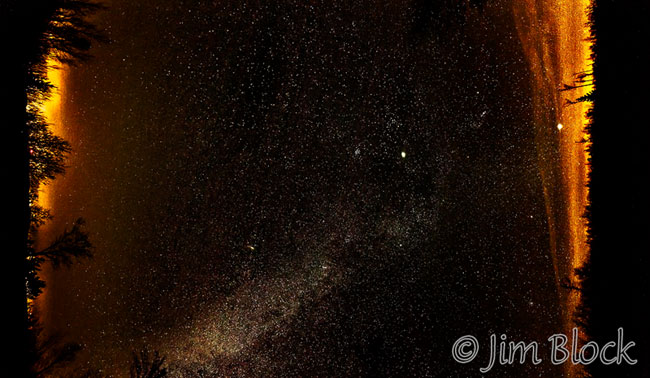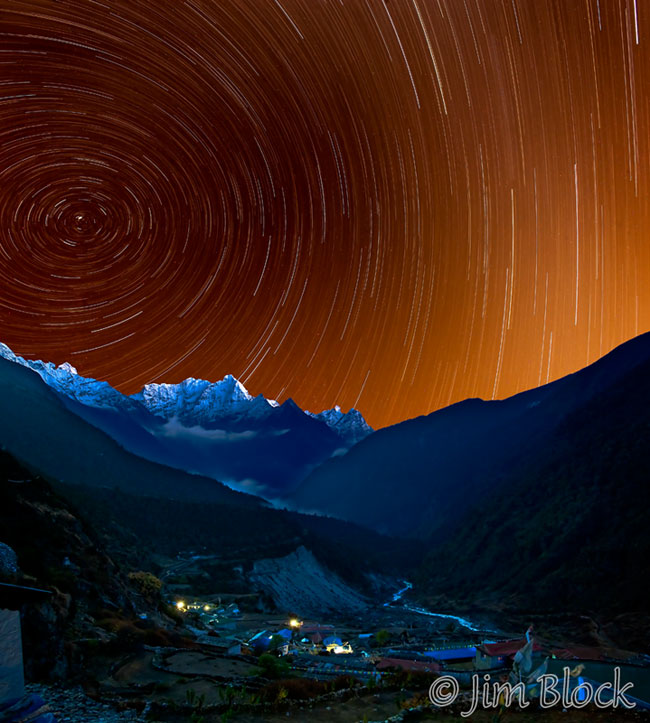Last week featured cool, clear nights and a fairly new moon. Ideal conditions to see lots of stars. So, prompted by a question I was asked about photographing stars in one of my classes, I went out and experimented with photographing the sky—something I rarely do at night.
The photo below show the view almost directly overhead just after midnight November 16. North is to the top, east to the right. The camera sees far more than the naked eye does. I certainly did not see this many stars or the Milky Way. There is considerable light pollution on both horizons.

This photo was taken at ISO 3200, 17 mm on a full-frame camera, f/4, and 8 seconds. In hindsight I wish I would have given it a stop more exposure, f/2.8, but I was worried about my ability to focus accurately. It is several individual photos merged together.
Pleased with my early attempts, or maybe just having fun and learning things, I decided to try star trails, also from my backyard. But I was not content to leave the photo I captured alone so I combined it with one taken in Nepal at Khari Gompa in Thamo. The mountain in the background in the composite below is Thamserku. The star trails image was shot at ISO 200, 17 mm on a full-frame camera, f/8, and 94 minutes.

Perhaps you would like to try your hand at this. Use wide angle, manual exposure, and manual focus. Use exposure times less than 30 seconds to get reasonable sharp stars and as long as you dare for star streaks. And, of course, a solid tripod.
